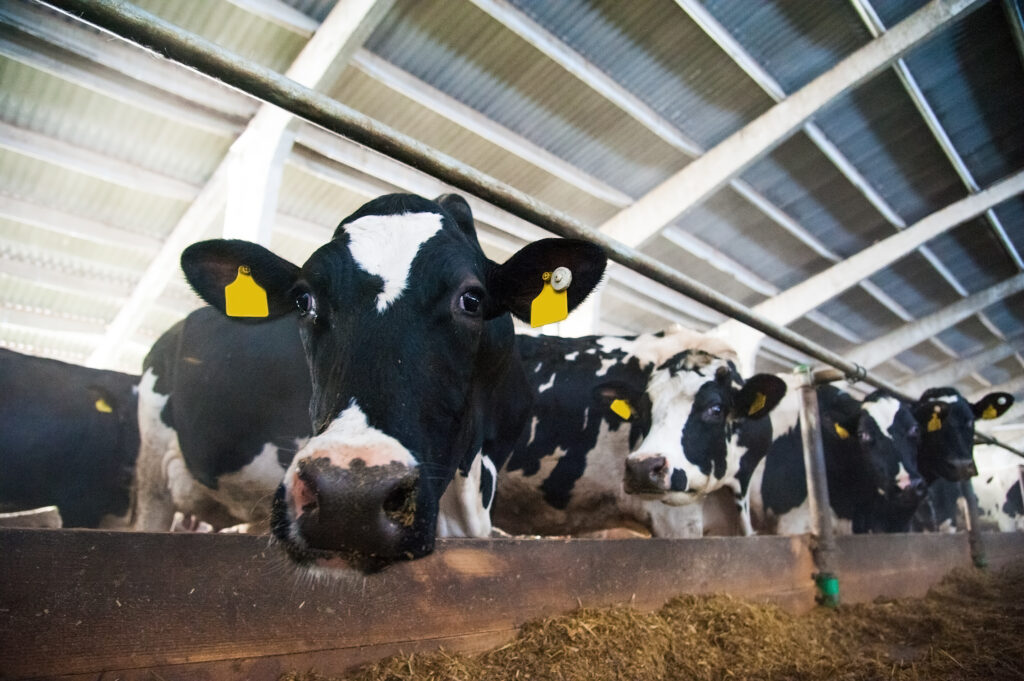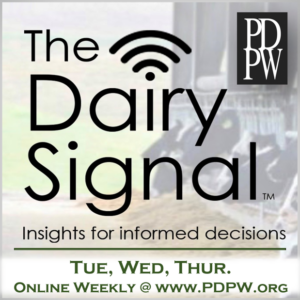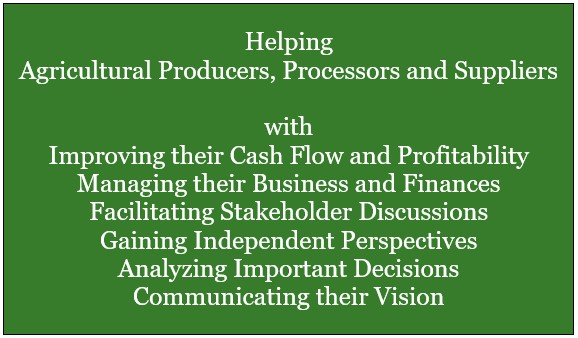If you are using Internet Explorer to view this site, please use another browser for optimal viewing.
Please share this page with these links to Facebook, Twitter, LinkedIn and Email:

Care – Tomorrow’s consumer wants to have a deeper relationship with their food and how it’s produced. They want to know how farmers and ranchers care for plant, animal, labor, land and environmental resources to produce safe food. They are demanding this all across the supply chain from farm to fork.
Commit – Producers should show society that they are serious about knowing and further reducing their environmental impacts and addressing important societal issues. If farmers and ranchers don’t commit to consumers about the stewardship they practice to create sustainable systems, who will?
Communicate – Since no one knows more about what is happening on farms and ranches or has more at stake than the owners, these farmers and ranchers need to embrace and communicate their role and desire to be sustainable stewards of the resources they use.
I captured these ideas of Dr. Frank Mitloehner, a professor at University of California, Davis , from a recent webinar he participated in as part of the Dairy Signal webinar series presented by the Professional Dairy Producers of Wisconsin led by Shelly Mayer. The Dairy Signal webinars have provided timely information about the dairy industry.

Dr. Mitloehner’s focus for this episode was helping beef and dairy producers explain the environmental impact of cows with a special emphasis on greenhouse gases and biodiversity as interpreted and summarized by my following non-scientific perspectives.
Curriculum concerning cows needs context
I think the reason this episode really hit home for me was because of an assignment that I was helping my 6th grader with during the Covid-19 school shut down and parent teaching experiment. The correct answer for his assignment according to the materials was that cows create a significant amount of greenhouse gases and are bad for biodiversity and the environment.
This is a common message and one that isn’t usually fully discussed, especially if the presenter has an anti-animal agriculture agenda. However, I didn’t have the facts to help explain the rest of the story to my son. I’d like to summarize the following takeaways from Dr. Mitloehner’s presentation that help frame up the environmental impacts of cows and would have been helpful to have when I was working with my son.
Cows and other ruminants create biogenic methane
Beef and dairy cows, as well as buffalo, antelope, sheep, goats, moose, deer, bison and giraffes are ruminant animals, meaning that they have the unique ability to ferment plant-based food in their stomachs prior to digestion which allows them to obtain nutrients from grasses, hay, corn stalks and other plants that humans and other animals can’t digest. A by-product of this fermentation process in the stomach is the production of biogenic methane which eventually ends up in the atmosphere as a greenhouse gas and decomposes over 10 years.
The ruminant herd hasn’t increased over time
According to Dr. Mitloehner, before European settlement of North America, there were approximately 60 – 80 million bison and 40 million pronghorn antelopes for a total of approximately 100 – 110 million large ruminants roaming what is now the United States. Today the U.S. has 90 million beef cattle, 9 million dairy cows and only 1 million or so bison and antelope combined for a total of approximately 100 million large ruminants. The U.S. has merely replaced the wild ruminants in this country with domesticated ruminants and the ruminant herd hasn’t increased over time.
Ruminants are part of the biogenic methane carbon cycle
Cows and other ruminants are part of the biogenic methane carbon cycle where plants take carbon dioxide from the air and use water, sunlight and nutrients to create oxygen and carbohydrates including cellulose. Then ruminants take cellulose and oxygen and nutrients from the plants along with water to create human food, milk, nutrients, organic fertilizer, carbon dioxide, biogenic methane and other byproducts. The biogenic methane is released into the air and converts to carbon dioxide through a process called hydroxyl oxidation over 10 years to start the cycle all over again.
Biogenic methane is decomposing as it’s being produced
According to Dr. Mitloehner’s research, the biogenic methane carbon cycle is currently so sustainable that the amount of biogenic methane in the atmosphere from cows that is converted to carbon dioxide each year for use by plants is equal to the amount of biogenic methane that is produced by cows each year.
Greenhouse gases from oil continue to build
While methane is a greenhouse gas that causes global warming, it’s important to differentiate between different greenhouse gases. When greenhouse gases are produced from the burning of fossil fuels such as coal and oil for our transportation and energy needs, those gases go up in the atmosphere and don’t decompose for thousands of years. They call this process of mining carbon from below the earth’s surface, burning it and releasing it into the atmosphere stock gas since it only stocks the greenhouse gases that don’t go away. So far, the world has used around 50% of the carbon that’s underground on this planet according to Dr. Mitloehner.
Herd numbers and biogenic methane levels aren’t increasing
The current cow herd is not adding additional methane to the atmosphere because the biogenic carbon cycle is in balance where the methane produced by cows is converted to CO2 and used by the plants to feed the cows in a sustainable cycle. Biogenic methane is a flow gas which is being produced and destroyed at an equal rate unless the industry produces less methane which leads to a net cooling effect on the environment.
Cows can cool the climate while feeding the world
If you decrease methane emissions by decreasing cow numbers or by using anerobic digesters, feed additives, or manure separators, then you are actively pulling carbon out of the atmosphere which creates global cooling. Cattle producers can be a solution to global warming.
In fact, California is subsidizing the livestock industry’s cost of capturing methane that is then converted into renewable natural gas and used by vehicle fleets to replace diesel fuel while lowering methane emissions. This is the new gold rush in California according to Dr. Mitloehner and can be a model for other states and nations that want to subsidize practices that reduce greenhouse gases.
Cows don’t need to compete with humans for food
The need to increase production to feed the world has been met with concerns about reducing biodiversity and bringing marginal lands into production in the U.S. and around the globe. Cows are actually well positioned to show their sustainability and promote biodiversity while increasing production since they don’t need to compete with humans for food because of their ruminant stomachs.
Only cows can produce food from 70% of all agricultural land
Dr. Mitloehner stated that 70% of all agricultural land in the world and United States is marginal land that can only produce grass pastures. This land can only be used to take carbon from the atmosphere to grow grasses which aren’t digestible by humans or non-ruminant animals. In California, 20% of agricultural byproducts such as almond hulls, cotton seeds and human inedible products end up in cows.
Cows step in to convert these plant products to human food as only they can without needing to bring additional acres into production. This process then releases carbon back to the atmosphere in the form of methane from the cows which is oxidized for plants to use again in this sustainable cycle.
Each cow is producing more milk
In 1867, the U.S. had 9 million dairy cows producing enough food for 30 million people. By 1950, the U.S. had 25 million dairy cows. Today, the U.S. is back to 9 million dairy cows producing food for 330 million people, an 11x increase from 1867 with the same number of cows and 60% more milk produced with 9 million cows today than the 25 million cows producing U.S. milk in 1950, according to Dr. Mitloehner’s research. Since the U.S. dairy herd has decreased since 1950, this has created a cooling effect since then.
Each cow is producing more meat relative to greenhouse gases
Dr. Mitloehner stated that the U.S. produces 18% of the global beef with 8% of the global beef cattle. The Food and Agriculture Organization of the United Nations states that the North American beef supply chain is already more than 35% more efficient from a greenhouse gas perspective than the global average due to production efficiencies.
Cows are producing more milk and beef with less emissions
Better genetics, nutrition and vet care for the cows have driven efficiency improvements and a net cooling effect on the environment given the oxidation of the methane. Just like getting more miles from every gallon of gas is important for providing needed transportation and reducing emissions at the same time, getting more milk and beef from every cow is also important for providing needed nutrition and reducing emissions.
Cows produce natural organic fertilizers
When consumers want plant-based foods instead of beef and milk, those plants are usually fertilized with products creating a larger negative environmental impact due to the use of resources extracted from the earth to produce those nutrients. Even when consumers want organic food, a sustainable animal production system is still needed to provide the organic fertilizers for the organic crops. According to Dr. Mitloehner, dairy manure fertilizer components of nitrogen, phosphorus and potassium are in a sustainable ratio similar to what the plants that produce the dairy feed need.
Less efficient food systems have an environmental cost
When consumers want food from less efficient food production systems such as natural, organic, etc. that use more land and animals for each unit of production, the production inefficiencies and mitigation costs of the environmental impacts compared to conventional production practices are factored into the price to compensate for these inefficiencies and mitigation efforts. This aligns the costs of these extra food attributes with those who want them and can afford them.
Communicate the positive impact cows have on the environment
Groups like the Food and Agriculture Organization of the United Nations and the World Wildlife Fund understand the need to balance food production and biodiversity and see the way cows can meet both objectives. The World Wildlife Fund has recently teamed up with Cargill and Burger King and ranchers in the Northern Great Plains to launch a grassland restoration program where they will take 8,000 acres of marginal crop land and convert it back to ecologically diverse grasslands with beef cattle as the primary grazers in the ecosystem to maintain it. This is just one more example of the way cows can have a positive impact on the environment, a story that needs to be communicated.
How can AgriStrategies LLC help?

